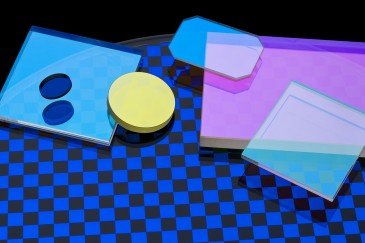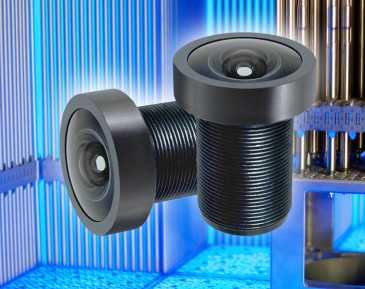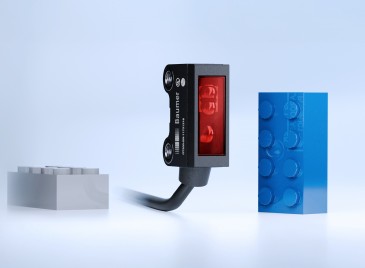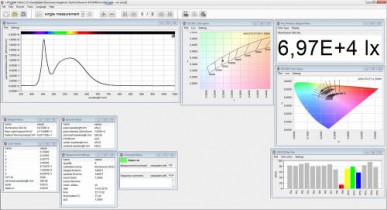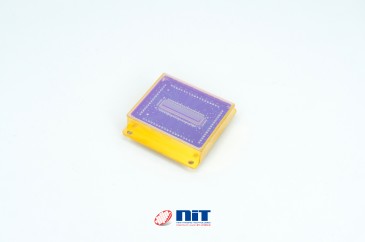
Using low-frequency laser pulses, a team of researchers from the Massachusetts Institute of Technology (MIT), Boston College and Harvard University for the first time have measured the characteristics of a unique kind of fluctuating magnetism, known as a quantum spin-liquid state, in the antiferromagnet herbertsmithite. (Herbertsmithite is a mineral named after the mineralogist Herbert Smith.)
In antiferromagnets, adjacent magnetic elements align in opposite directions, cancelling out the material’s magnetic field. In herbertsmithite, however, the triangular nature of the kagome lattice does not allow the formation of any traditional antiferromagnetic order. Consequently, the magnetic moments in the crystal remain strongly fluctuating at any temperature. Although a spin-liquid state has previously been observed in herbertsmithite, this probe constitutes the first detailed analysis of the material’s optical conductivity.
“The optical conductivity of herbertsmithite lies in an awkward frequency range near one terahertz, which is too low to be accessed by traditional infrared spectroscopy and too high to be accessed by any AC electrical measurements,” says Nuh Gedik, the Biedenharn Career Development Associate Professor of Physics at MIT. The head of the Gedik Group explains that this frequency range incidentally matches the typical spectral width of femtosecond lasers. The scientists generate the required terahertz radiation by passing the femtosecond laser pulses through a nonlinear zinc telluride (ZnTe) crystal. “Difference-frequency generation from the frequency components of the laser gives rise to a new coherent optical pulse with frequencies between 0.1 and 3 THz. Afterward, we focus this new pulse onto the herbertsmithite crystal and measure the transmission of the radiation through the sample, from which we extract the optical conductivity of the crystal in the corresponding terahertz range.”
According to the MIT physicist, the elementary excitations in a spin-liquid system are predicted to be pairs of spinons, a new type of particles that carry only spin but no charge. Surprisingly, his team observed optical conductivity from the spin-liquid state in herbertsmithite, implying interactions between the spinons and the charges. “Such spinon-charge interactions have been predicted to be mediated by a so-called gauge field in a strongly-correlated quantum system,” Gedik explains. The experiment, thus, provides indirect evidence of such a gauge field in herbertsmithite. The results help the researchers refine differing theories on how these spinon-charge interactions occur in a spin-liquid state and more realistically describe the spin physics in the crystal.
Although Gedik cannot predict any practical applications at this stage, he says, “Realisation of a spin-liquid state might allow us to pursue some intriguing concepts in quantum information.” Present research in spin-based quantum computation, for example, focuses on using a single electron spin to store information. “The strongly-entangled macroscopic spin state in a spin liquid might allow us to store information in the entire spin system, which would be less susceptible to errors.” On the other hand, spin-liquid physics is closely related to high-temperature superconductivity. “Research on spin liquids might help us to resolve some complicated problems in superconductivity, which might eventually lead to important applications,” Gedik posits.
Excited about being able to assist in answering a central question in spin-liquid research, Gedik says, “It is rare that a new phase of magnetism is discovered, and it is exciting to be among the first to discover its properties.”
After having detailed the static properties of the spin-liquid state in herbertsmithite in the article “Spin Induced Optical Conductivity in the Spin Liquid Candidate Herbertsmithite,” the team now plans to study the electron dynamics of the material, using time-resolved experiments based on ultrafast lasers. “We are looking forward to results that might give us new insight into the ground state, elementary excitations and interactions in the system,” Gedik says in conclusion.
Written by Sandra Henderson, Research Editor, Novus Light Technologies Today























 Back to Features
Back to Features
